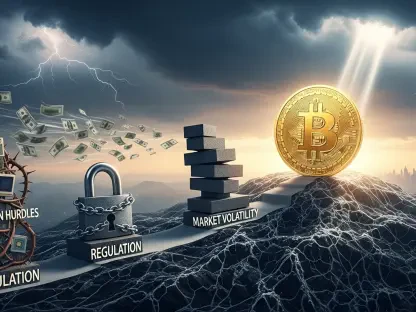I’m thrilled to bring you an insightful conversation with Kofi Ndaikate, a renowned expert in the fintech space. With a deep understanding of blockchain technology, cryptocurrency, and regulatory landscapes, Kofi offers a unique perspective on the evolving world of tokenization and real-world assets. Today, we dive into the groundbreaking move by SkyBridge Capital to tokenize $300 million of its hedge funds on the Avalanche network, exploring what this means for the future of finance, the benefits of blockchain integration, and the broader trends shaping the tokenized asset market.
Can you explain what tokenization means in the context of transforming traditional hedge funds into digital assets?
Tokenization, at its core, is about converting ownership rights of a traditional asset, like a hedge fund, into digital tokens on a blockchain. For hedge funds, this means representing shares or units of the fund as tokens that can be bought, sold, or traded on a digital platform. It’s a game-changer because it bridges the gap between conventional finance and the digital world, making assets more accessible and easier to manage. The process involves creating a digital representation of the fund’s value, securing it with blockchain’s immutable ledger, and enabling fractional ownership, which isn’t always possible in traditional setups.
What inspired the decision to tokenize such a significant amount, like $300 million, on a specific blockchain like Avalanche?
The choice of Avalanche often comes down to its technical strengths, such as high transaction speeds and low costs, which are critical for handling large-scale financial operations. Additionally, Avalanche has been positioning itself as a leader in tokenized real-world assets, with robust infrastructure to support compliance and scalability. For a firm dealing with hundreds of millions, these factors are crucial. It’s also about ecosystem trust—choosing a network that aligns with regulatory needs and offers strong partnerships can mitigate risks and ensure a smoother transition to on-chain operations.
Could you share some insights into the specific funds being tokenized, such as their investment strategies or goals?
While I can’t speak to the exact details of every fund, tokenized hedge funds like these typically focus on diverse strategies. For instance, a digital macro fund might aim to capitalize on global economic trends through investments in currencies, commodities, or derivatives, all managed with a tech-forward approach. Another fund might prioritize alternative strategies to generate returns uncorrelated with traditional markets. The key is that tokenization doesn’t change the core investment goals—it enhances how these funds are accessed and traded, often aiming to attract a broader investor base through digital means.
How do partnerships with technology providers play a role in making tokenization successful for large-scale financial assets?
Partnerships are absolutely vital in tokenization. Tech providers bring specialized platforms that handle the creation, issuance, and management of digital tokens, ensuring they meet security and compliance standards. They also offer tools for investor onboarding, identity verification, and transaction tracking, which are critical for regulatory adherence. Additionally, operational support from such partners ensures seamless distribution and administration, allowing asset managers to focus on strategy rather than the nuts and bolts of blockchain integration. It’s a collaborative effort that makes the process scalable and reliable.
Can you break down the significance of using specific token standards like ERC-3643 in projects of this nature?
ERC-3643 is a token standard designed specifically for security tokens, which are digital representations of regulated financial instruments. Unlike more general token standards, it incorporates features for compliance, such as transfer restrictions and investor verification, ensuring that only eligible parties can hold or trade the tokens. This is crucial for tokenized hedge funds because it aligns with legal requirements across jurisdictions, providing a layer of security and trust. It’s about making sure the digital asset behaves like a traditional security while leveraging blockchain’s efficiency.
What do you believe is fueling the explosive growth of the tokenized real-world assets market, which has already surpassed $26 billion?
The growth in tokenized real-world assets is driven by a hunger for efficiency and accessibility in finance. Blockchain technology cuts down settlement times, reduces intermediaries, and opens up markets 24/7, which is a huge draw for investors and institutions alike. Sectors like real estate, debt instruments, and private equity are leading the way because they benefit immensely from fractional ownership and increased liquidity. Plus, as global banks and asset managers experiment with tokenization, there’s a snowball effect—more adoption drives better infrastructure, which fuels even more growth. It’s a virtuous cycle.
How does tokenization enhance aspects like transparency and liquidity for investors in traditional financial instruments?
Tokenization boosts transparency by recording every transaction on a blockchain, creating an unchangeable audit trail that investors can trust. You can see exactly where your money is and how it’s being managed in real time, which isn’t always the case with traditional funds. As for liquidity, tokenization allows assets to be traded on digital platforms, often with fractional ownership, so you don’t need to lock up huge sums for long periods. It democratizes access, letting smaller investors participate in markets that were once out of reach, while also making it easier to buy or sell stakes quickly.
What is your forecast for the tokenized real-world assets market as it heads toward projections of a trillion-dollar industry by 2030?
I’m incredibly optimistic about the tokenized RWA market. By 2030, we could see it become a cornerstone of global finance, especially as regulatory frameworks catch up and provide clearer guidelines. The trillion-dollar projection isn’t just hype—it’s based on the potential to tokenize everything from real estate to corporate bonds to art. The key will be interoperability between blockchains and integration with traditional systems, alongside growing investor education. If these pieces fall into place, tokenization could redefine how we think about ownership and investment, making markets more inclusive and efficient on a massive scale.









